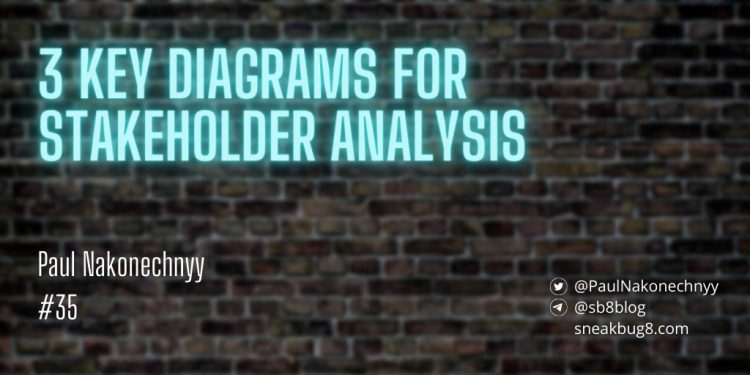3 Key Diagrams for Stakeholder Analysis
Published by Pavel Nakonechnyy on (updated: ) in Business Analysis.
Effective working relationships with the stakeholders are crucial for successful project execution for both Project Managers and Business Analysts. Therefore, it’s important to plan for Stakeholder Engagement (or Stakeholder Management) beforehand.
As per BABOK Guide v3:
Plan Stakeholder Engagement involves conducting a thorough stakeholder analysis to identify all of the involved stakeholders and analyze their characteristics. The results of the analysis are then utilized to define the best collaboration and communication approaches for the initiative and to appropriately plan for stakeholder risks.
It’s a standard in the industry to create a stakeholder list of varying complexity and level of detail. However, such a list does not allow for a brief overview of the state of Stakeholder Engagement. For that, several diagram visualizations can be applied.
Stakeholder Matrix
Stakeholder Matrix is one of the well-known techniques for Stakeholder analysis. With Stakeholder Matrix you classify stakeholders into 4 categories based on their influence and impact (or interest). Depending on the relation between these two factors you choose an approach to each specific stakeholder and place them on the matrix.
In the result you’ll get something like this:
Stakeholder Onion
With Stakeholder Onion you classify the very same stakeholders in a different way: this time based on their Role in the Solution. You can check BAWiki for a detailed explanation of how to create a Stakeholder Onion Diagram.
RACI
RACI matrix gives you a quick glimpse at how roles and responsibilities come together for different project tasks. Project Managers will often place all Project Deliverables and Activities on the same chart and Business Analysts focus only on the processes that really matter for their work, such as Change Request.
There is a number of more obscure rules for a RACI chart you should follow when you assign tasks to actors:
After successful stakeholder engagement planning, it is important not to forget to put these plans in motion and actually engage the stakeholders. Often, it is more about the way you communicate with stakeholders and not about the accuracy of your analysis. Be sure to create a powerful vision and deliver it to the stakeholders in different channels: emails, workshops, one-on-one, or get-together meetings).